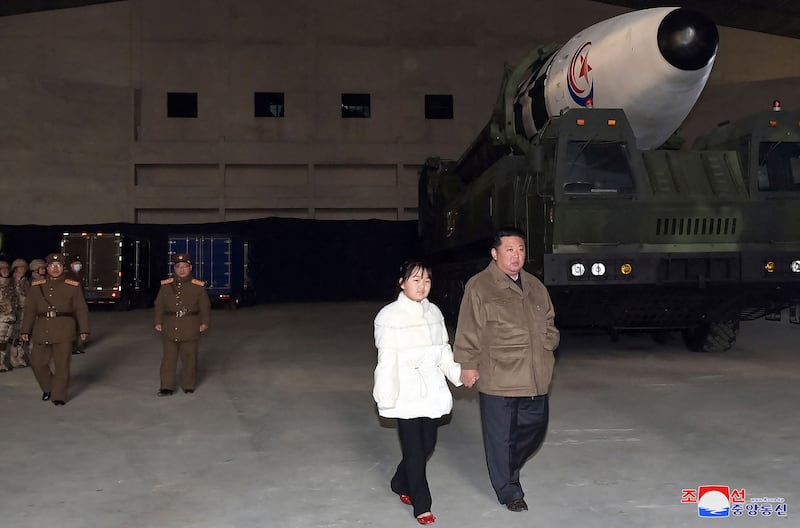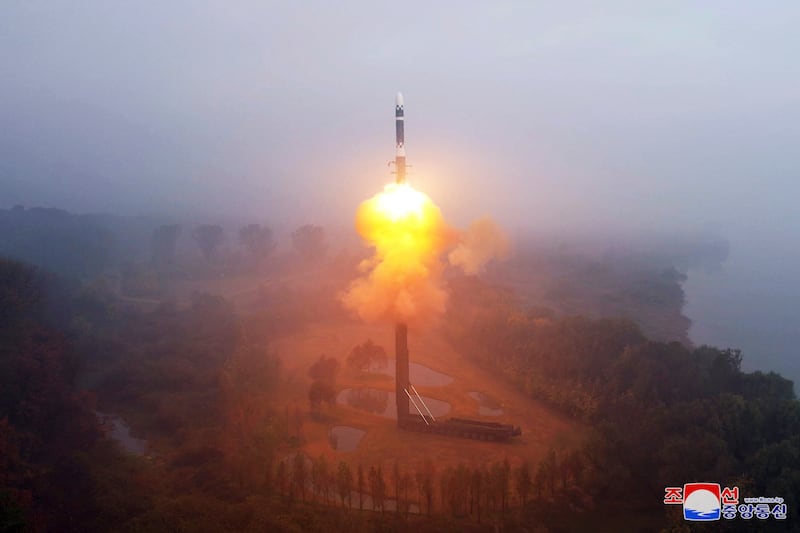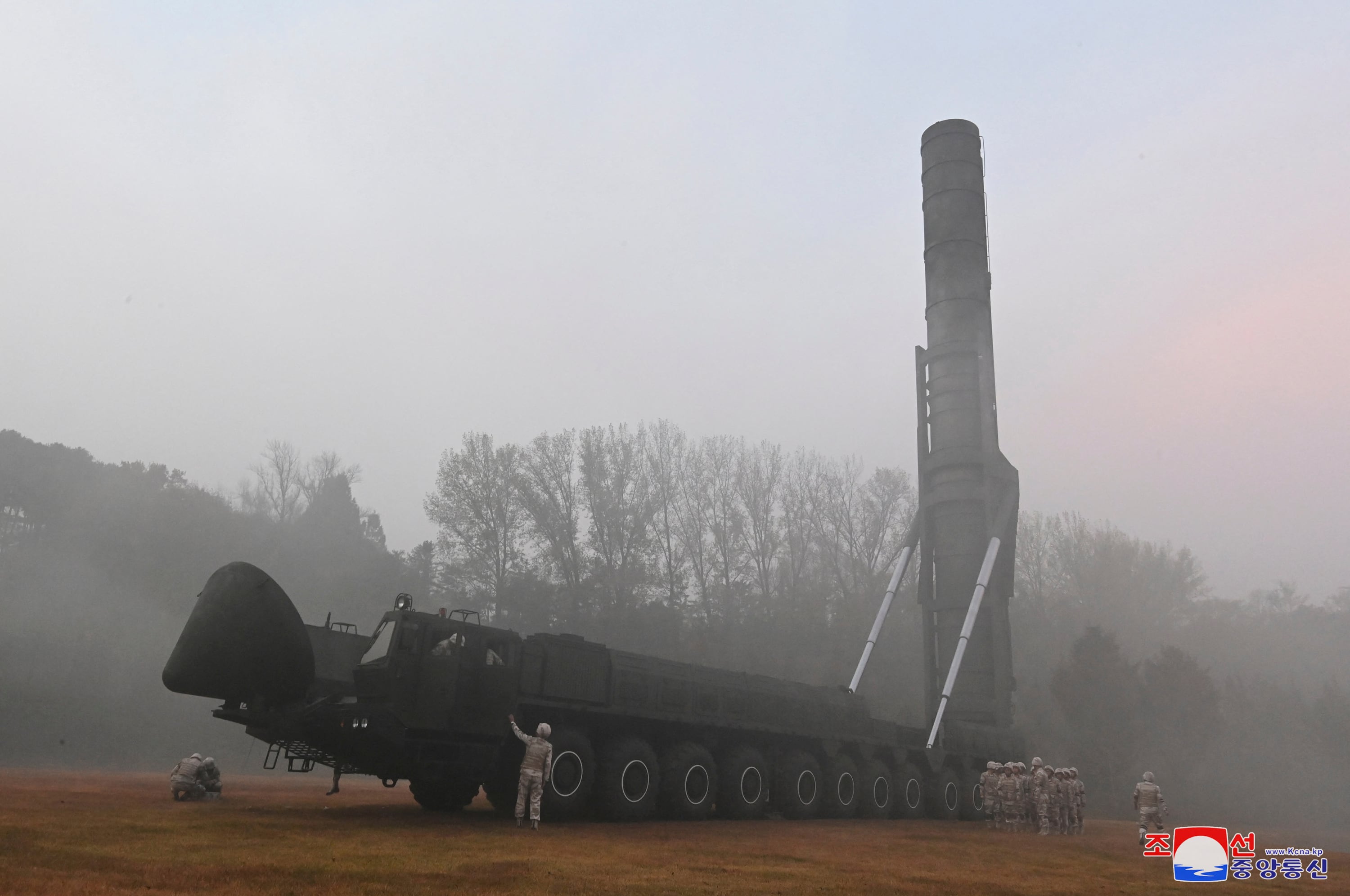SEOUL/WASHINGTON - North Korea currently has up to 10 intercontinental ballistic missiles and could expand its arsenal to 50 ICBMs within a decade, according to U.S. intelligence.
The U.S. Defense Intelligence Agency released the assessment on Tuesday of nuclear-capable missile threats against the United States.
The agency publicized a graphic as the Trump administration looks to build a missile defense system, dubbed “Golden Dome,” inspired by Israel’s “Iron Dome.”
The graphic shows the primary intercontinental ballistic missile threats to the U.S. are China with 400 ICBMs, rising to 700 by 2035; and Russia with 350, rising to 400 by 2035. Iran currently has none, but is projected to have 60 by 2035.
The agency defines an ICBM as a ground-based missile with a range exceeding 5,500 kilometers (3,400 miles) that flies on a ballistic trajectory and is typically armed with a nuclear warhead or warheads.

Despite U.N. sanctions forbidding its development of ballistic missiles and nukes, Pyongyang has successfully tested missiles capable of reaching the entire U.S. mainland, and has also conducted six underground nuclear tests.
Gen. Gregory Guillot, commander of U.S. Northern Command and NORAD, testified before the Senate Armed Services Committee on Tuesday. He expressed concern over North Korea’s new solid-fueled Hwasong-19 missile, which shortens launch preparation time and increases the threat to North America.
He said that regime rhetoric suggests North Korean leader Kim Jong Un is eager to transition his strategic weapons program from research and development to serial production and fielding, a process that could rapidly expand North Korea’s inventory and challenge U.S. missile defense capacity.
North Korea test fired the Hwasong-19 in late October, days before the U.S. presidential election won by Donald Trump, in a demonstration of what leader Kim Jong Un said was its determination to “counteract” its rivals and bolster its nuclear forces.
That was North Korea’s seventh ICBM test in as many years, and the one with the longest flight-time to date. Experts speculated that the North’s missile program is being helped along by its closer ties to Russia after Pyongyang sent materiel and troops for the war against Ukraine.

North Korea conducted its first successful launch of an ICBM, the Hwasong-14, that was theoretically capable of reaching parts of the U.S. mainland in July 2017. Just months later it tested the larger and more powerful Hwasong-15, which significantly extended the potential range to cover the continental United States.
Following a pause in testing amid diplomatic overtures by the first Trump administration in 2018 and 2019, North Korea resumed ICBM development with even more advanced systems.
In 2020, it unveiled the massive Hwasong-17, believed to be capable of carrying multiple warheads, and conducted test launches that emphasized payload capacity rather than range.

Then in 2023, Pyongyang successfully launched the Hwasong-18, its first solid-fueled ICBM, which marked a major technological advancement.
Solid-fuel missiles are quicker to deploy and harder to detect in advance, making them more survivable and tactically versatile than their liquid-fueled predecessors.
Edited by Mat Pennington.


